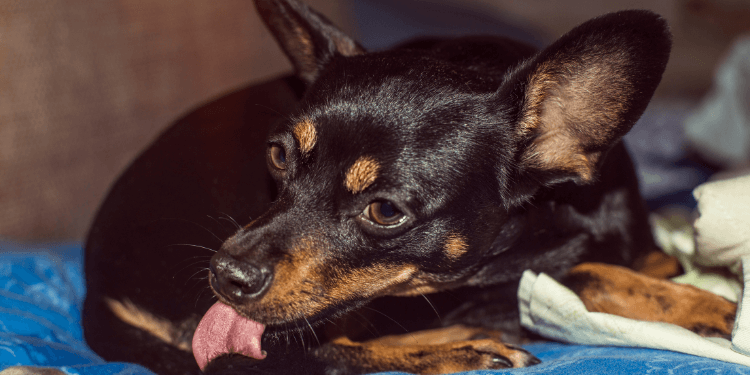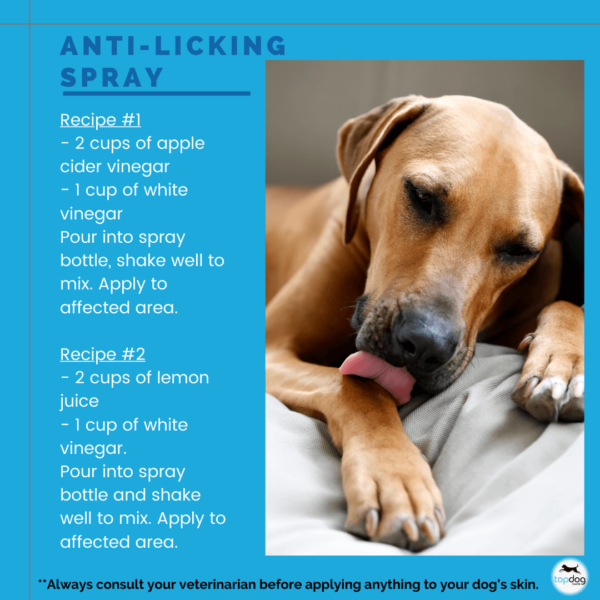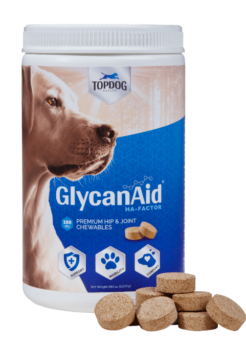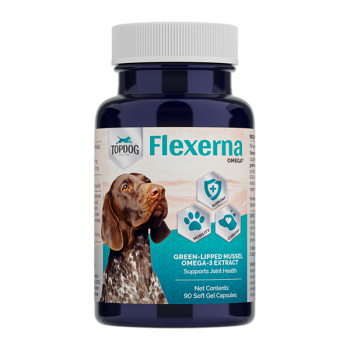Excessive Licking in Dogs after Surgery: Why They Do It, How to Stop It
Getting through dog surgery is a big step, but it’s only the first step. The next step is ensuring your dog’s incision heals properly. One of the greatest impediments to proper healing can come from the patient himself. Excessive licking in dogs after surgery can have detrimental effects on the overall healing process. Here you’ll learn why dogs do it, how to stop it, and why you need to prevent it for proper healing to occur.
Dog Surgery Aftercare
When it comes to post-surgery care, even a single lick or two to the incision site counts as excessive licking. It is imperative that the surgical site be kept as clean as possible to promote proper healing.
Despite what you may have heard in the past, pet saliva is not beneficial for healing. Pets’ mouths contain many germs, and their saliva does not act as a healing balm. In fact, the opposite is true. It can become a source of infection.
Not only can excessive licking lead to infection at the incision site, but it could also disrupt or damage the stitches. The best way to prevent either from occurring is by preventing your dog from licking the area in the first place.
Why the Excessive Licking in Dogs after Surgery
Dogs may be drawn to licking the incision site for several reasons. The area may feel strange or taste interesting to the dog. They may also lick the area because it’s painful, which may be the case in the first few days after surgery, or because it itches. Itching tends to occur about five to seven days after the surgery as the incision begins to heal, and the fur begins to grow back.
If your dog continues excessive licking at the incision site, or any other area, after the healing is complete, there may be another issue at hand. Excessive licking in dogs can occur if:
- Dogs are experiencing pain, often from arthritis or other conditions
- An injury occurs in a paw or other area of the body
- Dermatitis develops; this skin condition can result from allergies, bacteria, or food sensitivities
- A parasitic infection is present, such as fleas or mange
Keep in mind that the area your dog licks may not always correspond with the area that is bothering him. Even if the pain is elsewhere in the body, dogs may cope with the situation by constantly licking a front paw.
Boredom and behavioral issues can also contribute to excessive licking in dogs. Fear of noises, stress, separation, anxiety, and other anxiety issues can result in licking, as can compulsive behavior. Consistent licking may increase the release of endorphins, which produce a pleasant sensation. Dogs may repeat the behavior to enjoy the sensation continuously.
Even after the surgical site has healed or the licking is occurring elsewhere, incessant licking in a specific area can increase the risk of infection. This particularly applies to incessant paw licking, where constant moisture can contribute to the development of infection.
How to Prevent or Stop Excessive Licking in Dogs
The most straightforward way to prevent excessive licking after surgery is with an Elizabethan collar. Also known as an E-collar or cone, this collar is best worn for the first seven to 10 days following surgery as primary healing is taking place. While most pets don’t openly welcome wearing the collar, they do adapt. The more diligent you are with the collar, the faster and easier the healing process can be.
The E-collar remains the best solution to prevent licking after dog surgery, although there are alternative collars and other methods you can try.
Alternatives to Help Stop Licking
Bitter Liquid
You can find various products designed to stop pets from licking by applying a bitter or foul-tasting liquid, or you can make your own. You’ll want to get your vet’s approval first and make sure you only apply these products to the unbroken skin around the incision, and not the incision itself. Use a cotton swab for the most precise application.
Socks or Sweatpants
If you’re in a pinch without an E-collar or foul-tasting product, some people have reported that using socks or children’s sweatpants as a barrier against chewing and licking can work. This method should only be considered a short-term solution until an E-collar, or another collar can be used. Make sure the socks or sweatpants stay dry
Lick Sleeve
Another alternative is the Lick Sleeve. Similar to sweatpants, this is used on the back legs to prevent licking. It is again important for the area to stay dry and clean as moisture and dirt cause infections.
Signs of Healing after Dog Surgery
If your dog has somehow still found a way to get to his incision site, you’ll want to keep a careful eye on the site to ensure it is healing properly. What does proper healing look like?
- Skin around the incision is normal color or slightly red
- Skin may be a deeper red in the first few days following surgery
- The incision sides should be touching and the area clean
- Skin around the incision may be flat or slightly puckered
- Pale-skinned dogs may show bruising around the incision site
- During the first day, a small amount of blood may seep from the incision site
Bumps may also appear around the incision site. Some bumps may not necessarily be a cause for concern, but others could be. If you are worried about any bumps or irregularities around the incision site, you can take a photograph of the area and send it to your vet for his or her opinion.
You can also look for signs of improper healing and infection. These include:
- Blood seepage that lasts more than 24 hours
- Continuous seepage of blood or other fluids
- Excessive redness, swelling, discharge, or unpleasant odors
Any of the above signs merit an immediate trip to the vet.
When it comes to dog surgery aftercare, it’s always better to be cautious. If something doesn’t look right or appears to be causing your dog discomfort, you and your dog will feel better after a consultation with a trusted vet. The first step for post-surgery care is to prevent excessive licking, and the second is to provide your dog with the attention and care he needs for optimum health and successful recovery.





 Flexerna Omega
Flexerna Omega 







